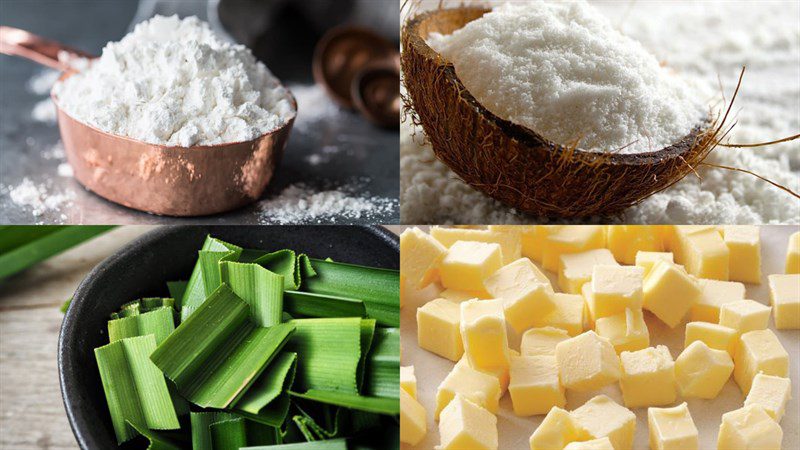-
Preparation
3 hours
-
Processing
20 minutes
-
Difficulty
Medium
Coconut milk pandan bread rolls are a cake dish that is quite simple and delicious that you can showcase for your family’s breakfast menu. Just with a few simple steps, you can have a batch of sweet, rich, and attractive bread. Get cooking right away with TasteVN!
Ingredients for Coconut milk pandan bread rolls For 4 pieces of bread
All-purpose flour 250 gr (flour number 13) Grated coconut 160 gr Sweetened fresh milk 70 ml Unsalted butter 20 gr Chicken egg 1 piece Pandan leaves 50 gr Powdered sugar 150 gr Salt 1/2 teaspoon Instant yeast 5 gr Cooking oil 5 gr Water 100 ml
How to make Coconut milk pandan bread rolls
-
Activate the yeast
Put 70ml of fresh milk and 5gr of instant yeast into a bowl. Stir well, cover tightly with plastic wrap, and let sit for 5 – 10 minutes.
Tip:- The ideal temperature for yeast activation ranges from 32 – 37 degrees Celsius; if higher, the yeast will die, or if lower, the yeast will not work.
- After the activation process, if the yeast forms a layer like crab bricks, it indicates that the yeast is still functioning well.
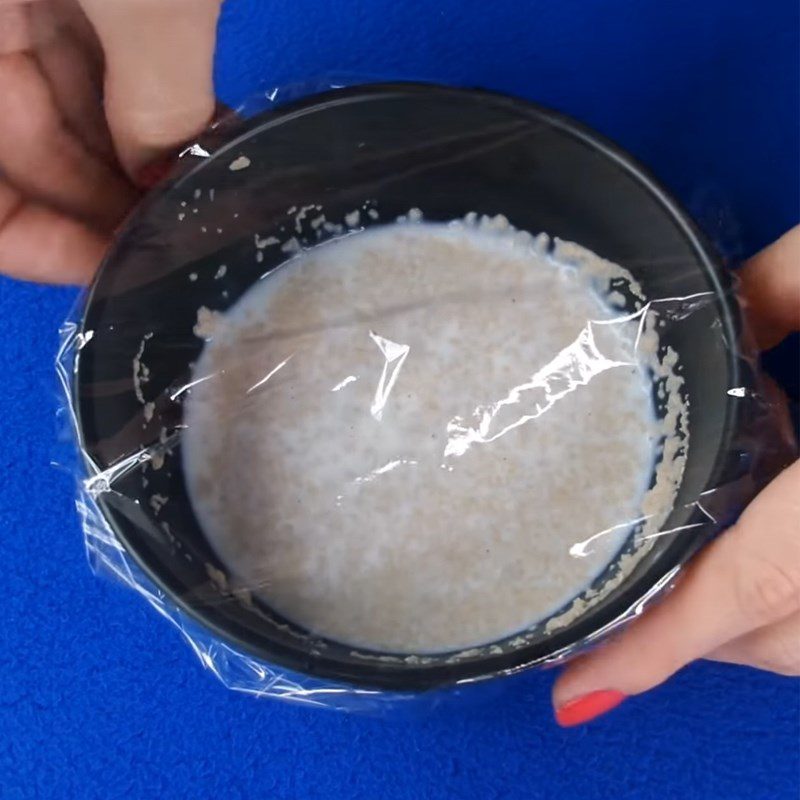
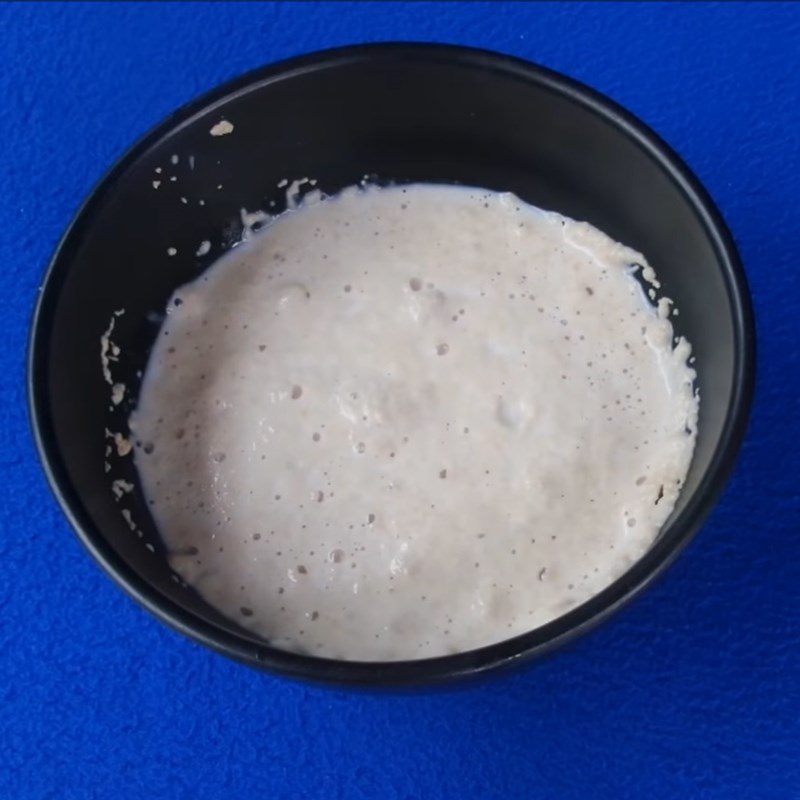
-
Mix the flour
Add 250g of flour, 100g of powdered sugar, 1/2 teaspoon of salt, 1 egg, and the yeast mixture into a bowl.
Use a whisk to mix the ingredients until well combined.


-
Knead the dough
Put the dough on the table and perform the kneading technique using Folding and Stretching.
First, fold the dough over, then use the palm of your hand to press and stretch the dough away. Note that you should press and stretch the dough away, not press down. Next, rotate the dough 90 degrees and repeat the two steps for 15 – 20 minutes.
How to know if the dough is ready:
- The dough is smooth and elastic.
- The dough does not stick to your hands: When pressed, it feels slightly sticky, but when you lift your finger, the dough does not stick to your hands.
- You can stretch the dough into a thin sheet without tearing.
- Check the dough using the Windowpane test. Pinch off a piece of dough and stretch it out. If the dough forms a thin membrane that does not easily tear and light can pass through, it is ready.
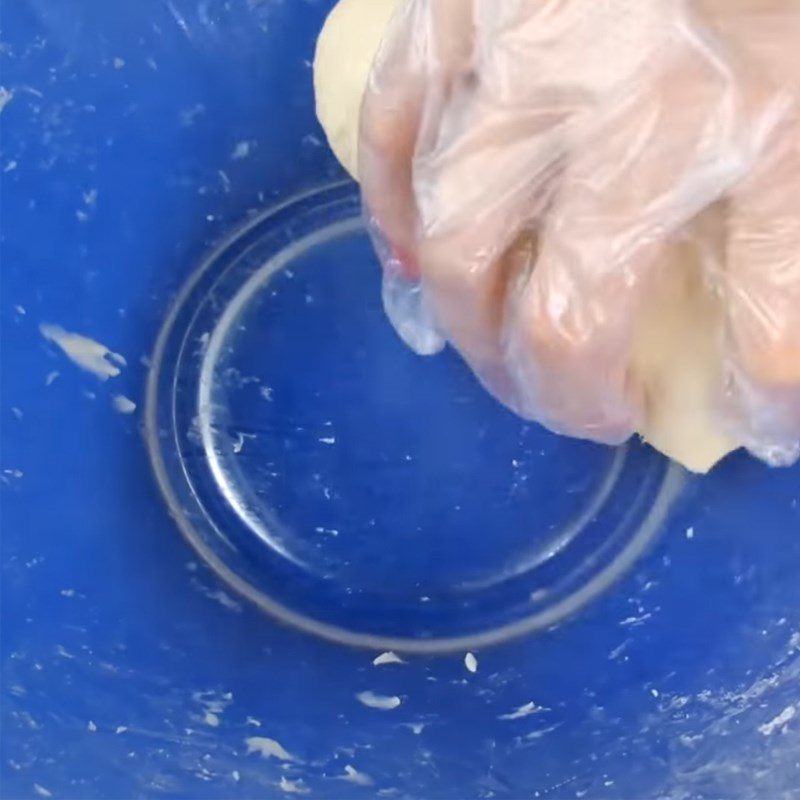
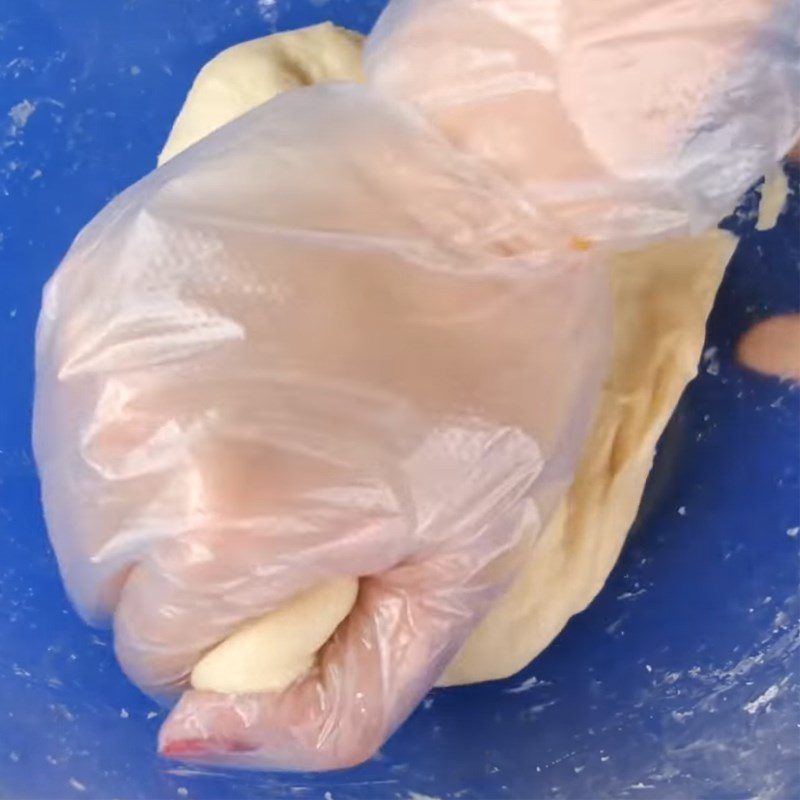
-
Proofing the dough
Rub cooking oil into the bowl and the dough, then cover tightly with plastic wrap and let it proof for about 1 hour until it doubles in size.
Tip: To check if the dough has proofed properly, press your finger deep into the dough; if the indentation remains, it has proofed correctly.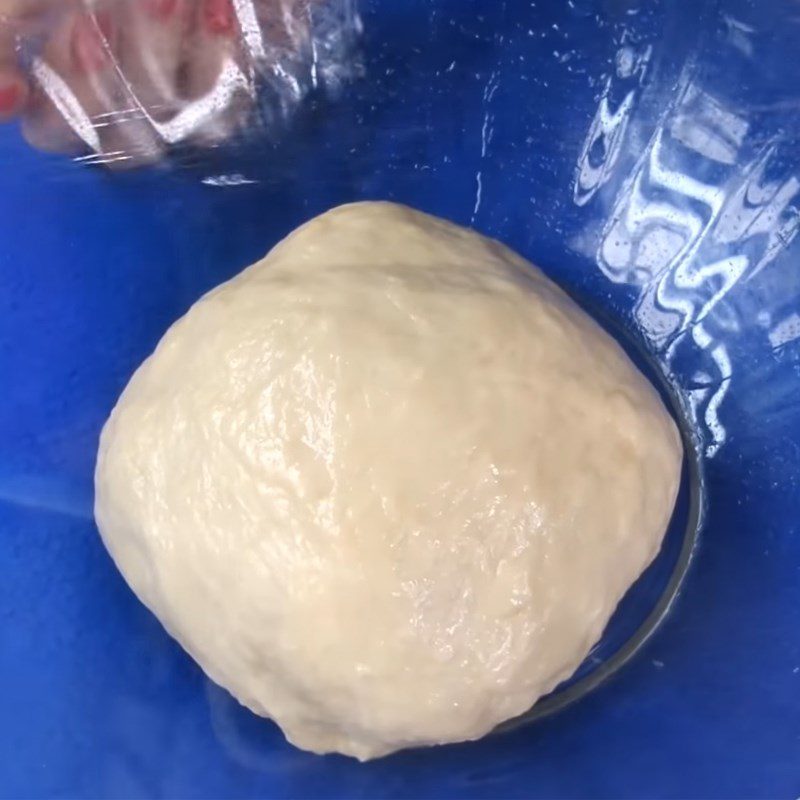

-
Blending pandan juice
Wash the pandan leaves, cut them into pieces, and put them in a blender with 100ml of water.
Blend the mixture until smooth, then strain it through a sieve to extract the juice.
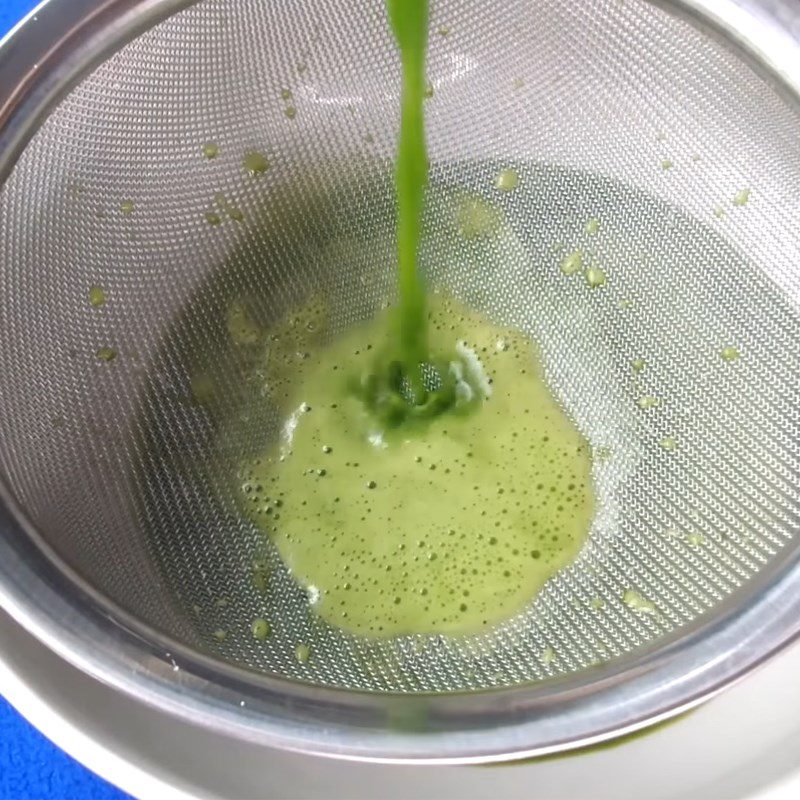
-
Making the pandan coconut filling
Add 160g of shredded coconut to the pandan juice, then mix well and marinate for 1 hour.
After 1 hour, squeeze out the excess pandan juice, place the coconut on a tray, and dry it in the oven for 50 minutes at 100 degrees Celsius.
Once dried, blend the coconut until fine using a blender. Then transfer the coconut to a bowl and mix well with 50g of powdered sugar and 20g of melted unsalted butter.
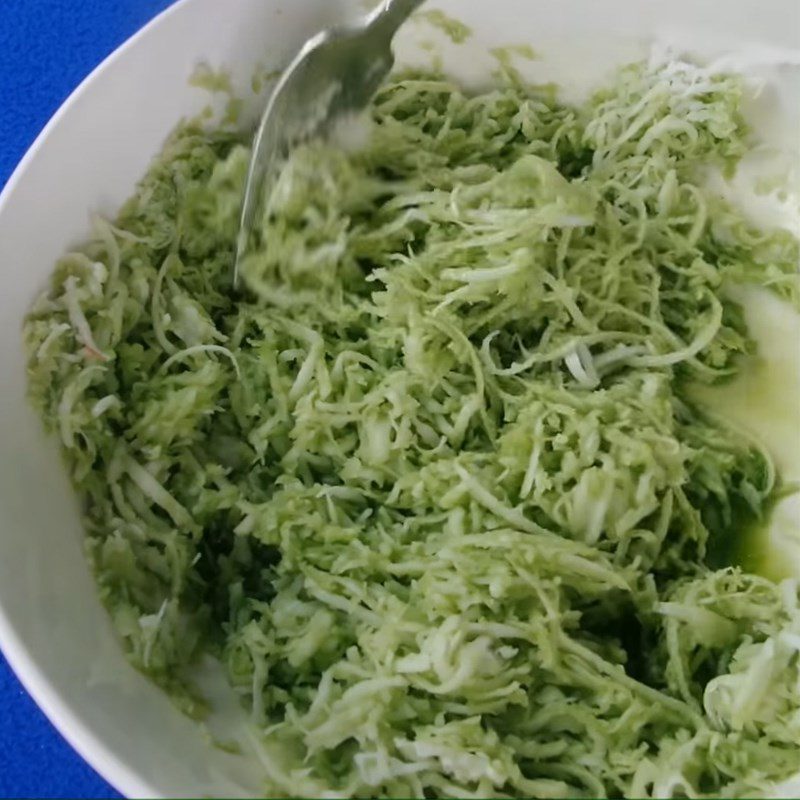

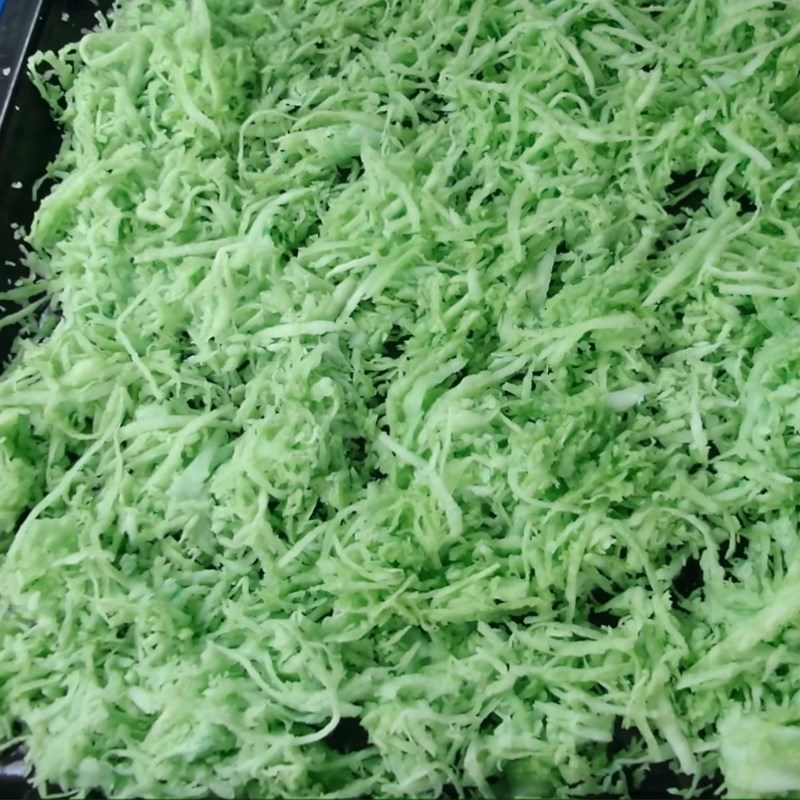

-
Shaping the cake
Place the dough on a table, flatten it slightly, and divide it into 4 equal parts.
Roll each part into a rectangle, spread the coconut filling evenly, then roll it up tightly, ensuring the edges stick together.
Use a knife to cut a line down the center of the dough (leave about 3cm from the top of the dough). At this point, cross two pieces of dough, grab both ends, and roll it up to finish.
After shaping, place the cake in the oven (do not turn on the oven) and let it rise for 30 minutes.
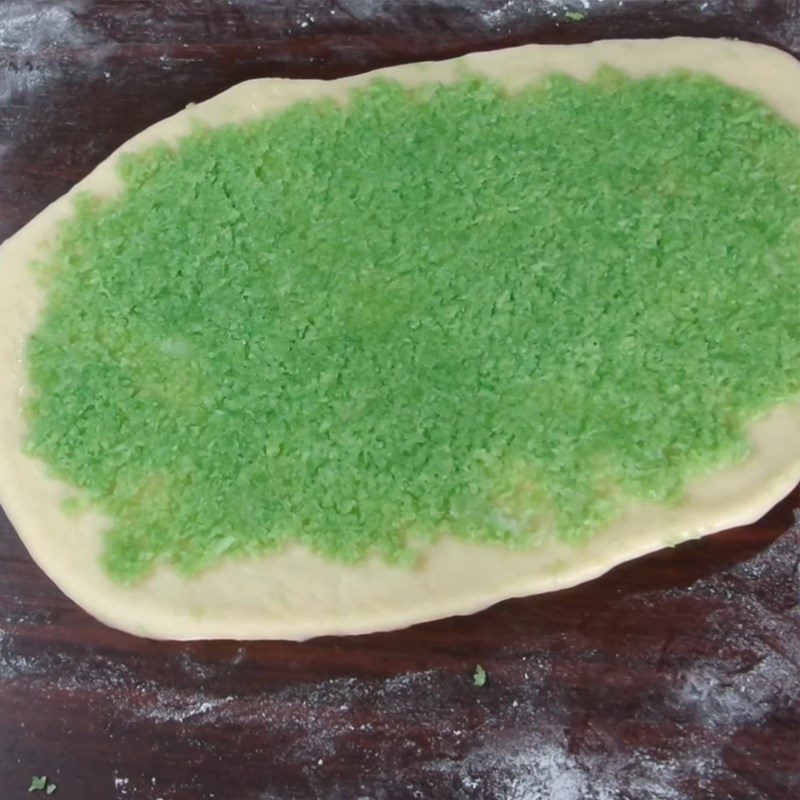
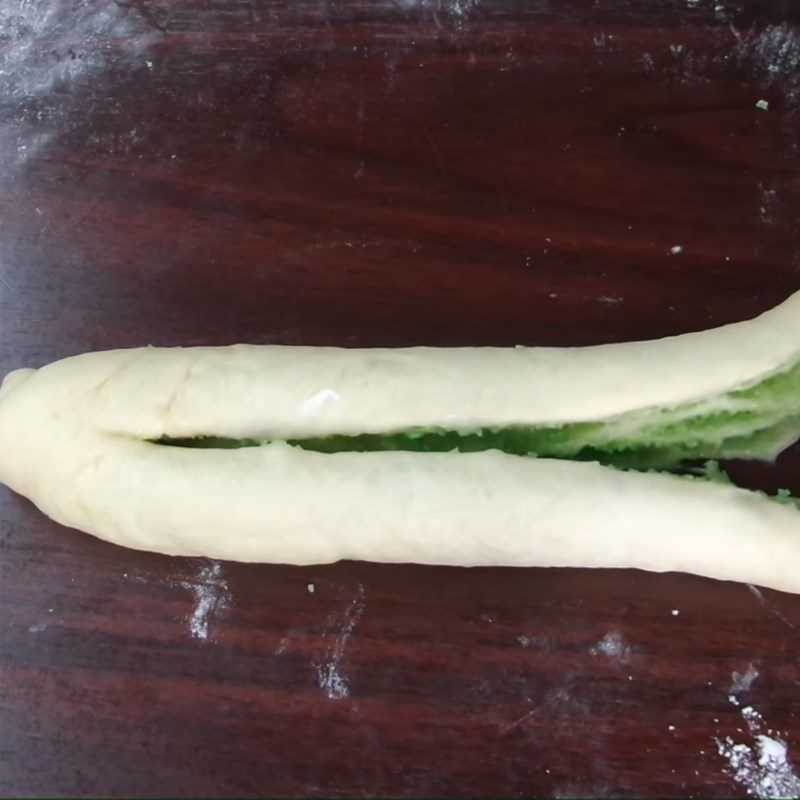
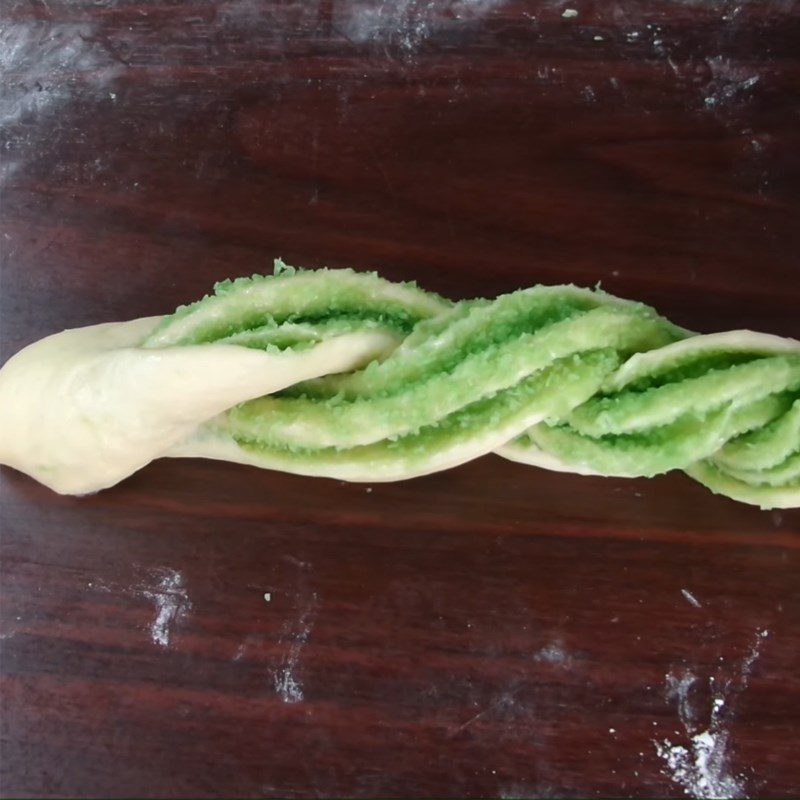
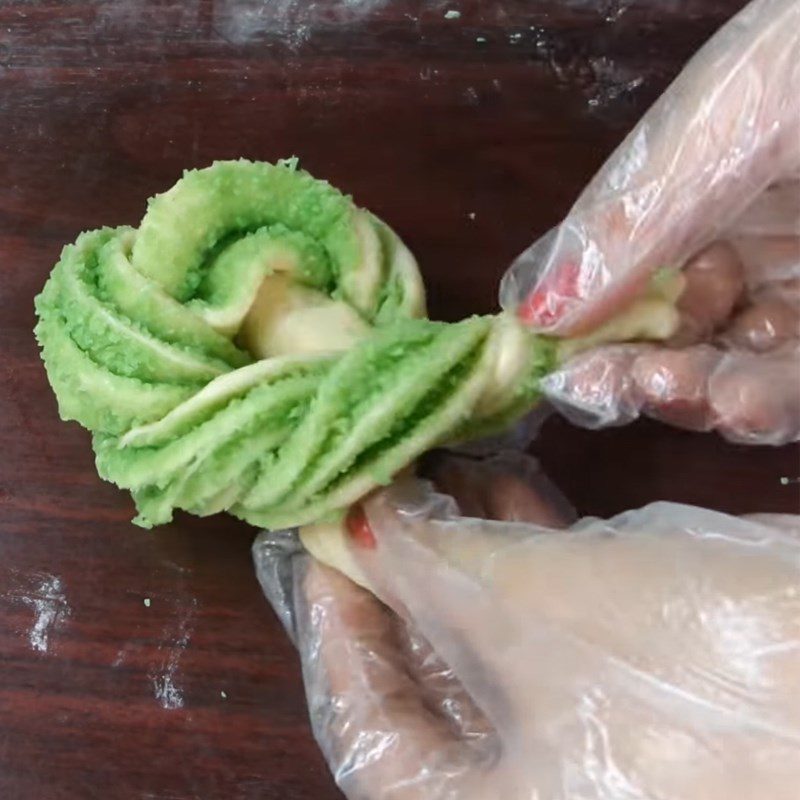
-
Baking the cake
Preheat the oven to 170 degrees Celsius for 7 minutes.
Brush a layer of melted unsalted butter on the surface of the cake, then bake at 170 degrees Celsius for 20 minutes.
When baking is done, brush another thin layer of butter on the cake to finish.

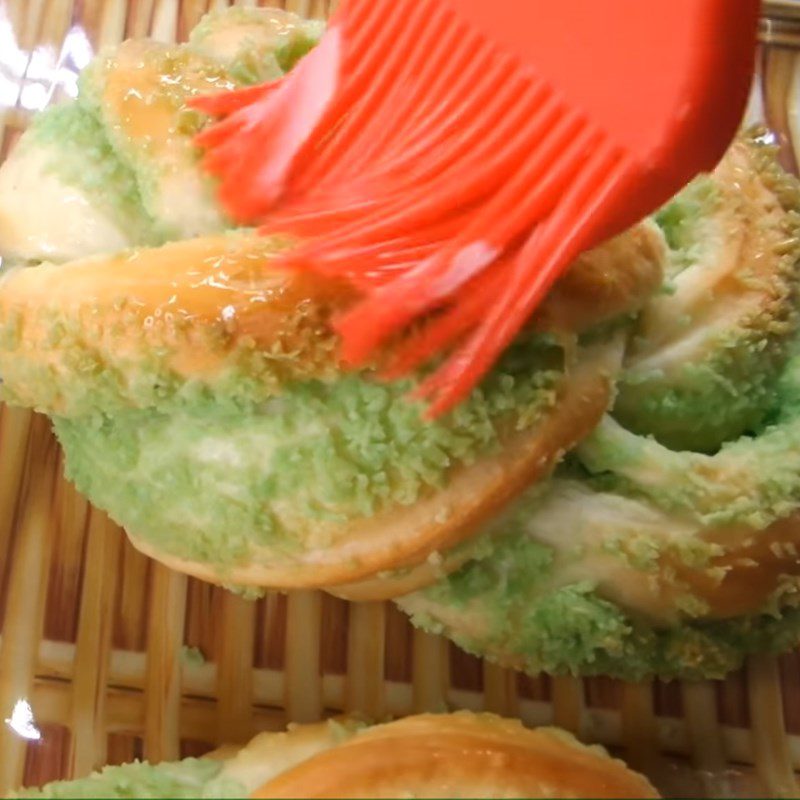
-
Final product
The bread after completion has a fragrant butter aroma, with each piece of soft and chewy bread filled with rich, sweet, and appealing coconut pandan filling.

Successful execution tips
- If you are not using instant dry yeast, you must activate the yeast with warm water or milk 35 – 40 degrees Celsius, stir well and let it sit for 5 – 10 minutes until the yeast swells to form a mass like crab bricks. It should not be hotter, as this will kill the yeast or weaken its activity)
- If using instant yeast, it is recommended to use golden instant yeast for rich and sweet bread types.
- Do not add salt and yeast directly together as this will weaken the yeast’s activity and may cause the bread yeast to die.
- If the dough does not rise after proofing: Please check the expiration date of the yeast; if the yeast is close to its expiration date, its activity may be weak and it could be dead. To check, you can mix a little warm water at about 30 degrees (not more than 37 degrees). Add the yeast and wait about 15 minutes; if the yeast bubbles like crab bricks, it is still good, and you can use it with confidence.
- You should knead properly to form gluten connections so that the bread texture is chewy and soft after baking.
Storage tips for bread
Put the bread in a sealed box or tightly tied plastic bag, store it in the refrigerator’s cool compartment and use it within 2 days.
TasteVN wishes you success in making the delicious pandan coconut milk bread rolls for a more nutritious morning!
*Source for the recipe and images from the Youtube channel Delicious Dishes

